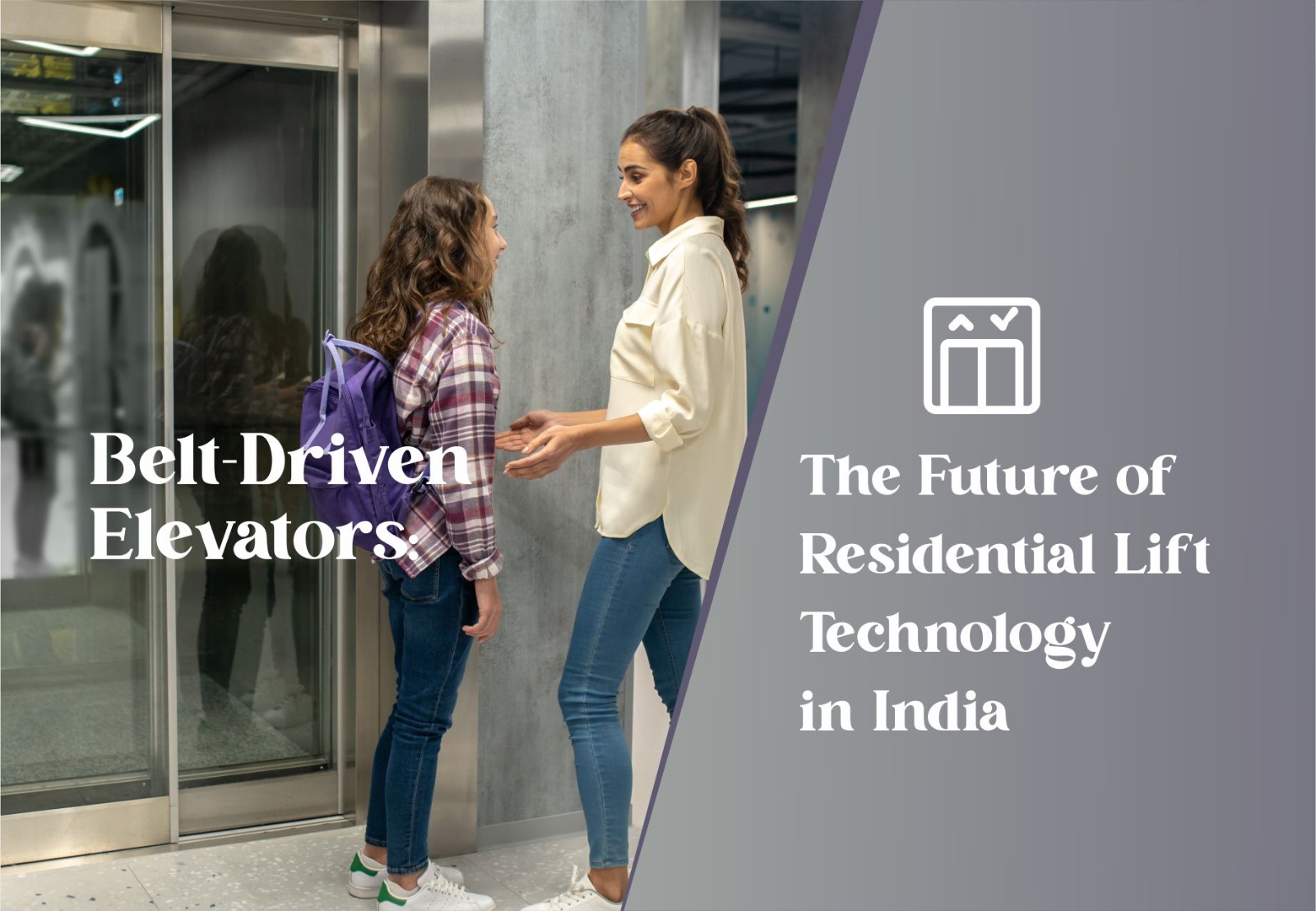
Belt-Driven Elevators: The Future of Residential Lift Technology in India
In the ever-evolving world of smart homes and space-efficient design, residential mobility is undergoing a transformation. At the center of this shift are belt-driven elevators—a technology that is rapidly redefining how Indian homeowners move between floors. Among the most advanced models available is the Brio BE 300, an innovation that is shaping the future of home elevators.
From quiet operation to energy efficiency and compact installation, belt-driven lifts offer a combination of comfort and performance unmatched by traditional systems. If you’re planning to install a lift at home, this is the revolution you need to know about.
Instead of relying on steel cables or hydraulic pistons, belt-driven elevators use a reinforced polyurethane belt embedded with steel cords. These belts loop over a motorized traction pulley that controls the movement of the cabin. The design reduces friction, wear, and noise—providing smoother and quieter rides.
Brio’s BE 300 model exemplifies this next-generation lift technology. Designed exclusively for Indian homes, it combines elegant aesthetics with durable engineering.
Whether you’re in a 2-floor bungalow or a 4-floor contemporary home, the BE 300 adapts seamlessly.
Unlike cable or hydraulic systems, belt elevators operate quietly with near-zero vibration. This is ideal for Indian families with elderly members or infants who need uninterrupted rest.
No pit? No problem. Belt-driven elevators like the BE 300 require minimal headroom and no separate machine room, saving up to 30% of space compared to older models.
Traditional elevators consume a significant amount of electricity. Brio’s belt-driven elevator is engineered for energy efficiency, using smaller motors and regenerative drive options that reduce power usage by up to 30%.
Brio integrates:
Your safety is not an afterthought—it’s at the heart of every Brio installation.
Though home hydraulic elevators may seem cheaper initially, they require frequent servicing and higher electricity usage. Belt-driven systems, with fewer moving parts and minimal lubrication needs, result in much lower maintenance costs.
Yes. While a Brio BE 300 may cost slightly more than a basic hydraulic system upfront, the benefits justify the price:
You save more in the long run—and enjoy a superior ride every day.
Brio understands Indian homes are diverse in architecture. That’s why the BE 300 is:
You don’t adapt to the lift—the lift adapts to you.
Even if your home wasn’t designed for a lift, the BE 300 can often be retrofitted with minimal civil work.
Srinivas R., Hyderabad: “The Brio BE 300 fits beautifully in our new villa. We barely notice it working—it’s that silent!”
Meena & Dhiraj, Pune: “We love how Brio helped us customize our cabin. It feels like a part of our home—not an afterthought.”
Brio is more than a lift provider—it’s a partner in your home’s evolution.
The future of residential lift elevators is belt-driven—sustainable, silent, safe, and space-saving. Brio’s BE 300 leads this movement, offering Indian homeowners a smarter way to live vertically.
Whether you're renovating, building from scratch, or future-proofing your home, don’t settle for outdated technology.
Ready to Elevate Your Home?
📞 Call us at +91 9398113939
📧 Email: info@brioelevators.com
🌐 Visit: www.brioelevators.com
Secure a free site survey and quote today—and step into the future of home living with Brio Elevators!
Ushaf Guest
09 January 2026, 06:02
Post: Residential Lift Elevators That Fit Every Lifestyle: From Compact to Luxury
Donaldzes Guest
06 January 2026, 14:33
Post: Customizable Home Elevator Interior Design for Modern Living
health products online Guest
06 January 2026, 03:51
Post: Hydraulic Lift Systems for Homes: Pros, Cons & Price
health products online Guest
06 January 2026, 03:18
Post: Hydraulic Lift Systems for Homes: Pros, Cons & Price